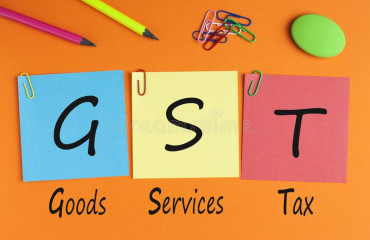
NEW DELHI : The union ministry of power is likely to ask for a cut in the goods and services tax on components used in hydropower projects.
NEW DELHI : The union ministry of power is likely to ask for a cut in the goods and services tax on components used in hydropower projects.
The ministry may seek a cut in components like turbines, steel and cement which are in the higher slabs, two people aware of the matter said.
The suggestions were discussed in a recent meeting at the ministry and may be taken up with the finance ministry, they said. The Central Electricity Authority (CEA) also has put up a case for a GST cut.
"As the levy on the components is at 18% or above, the need is that the levies should at least be below the 18% slab. The recommendation to the finance ministry would be for bringing these items in the 5% slab as suggested by the stakeholders," said one of the two people mentioned above.
While on turbine and steel, GST stands at 18%, that on cement is at the highest slab of 28%.
The push for lowering of GST comes at a time when the ministry is preparing a new hydropower policy which would soon be put forward to the union cabinet for its approval. Under the policy, states in the North-east holding rich hydropower potential may get central grants of around ₹4,000 crore to pick equity stakes in hydropower projects.
The policy would also look at rationalizing tariffs. The proposal to lower the GST also aims at lowering the tariffs among other objectives.
Queries sent to the ministries of power and finance remained unanswered at press time.
In its ambitious journey of 500 GW installed renewable energy capacity by 2030 and net zero carbon emission by 2070, the power ministry has been looking at ways to lower tariffs and boost investment. On 27 June, Mint reported that the power ministry is considering recommending slashing the GST on grid-scale battery storage to 5%.
Further, the move to propose a GST cut comes at a time when the centre is also trying to revive several stuck hydro projects owned by private players. Last month, 12 stuck hydro power projects in Arunachal Pradesh with a cumulative installed capacity of over 11 GW were handed to state-run hydro power companies NHPC, NEEPCO and SJVNL. These projects had been stuck for over 15 years.
The installed hydropower capacity in the country is 52 GW, and 18 GW is in the pipeline. The government aims to take the hydropower capacity to 78 GW by 2030, out of the target of 500 GW installed green power capacity.
Several hydropower projects are under construction or in the conceptual stage in the border state of Arunachal Pradesh and the union territory of Jammu & Kashmir.
Late last year, state-run NHPC Ltd submitted a pre-feasibility report to the CEA for the 11GW Upper Siang multipurpose storage project at a capital expenditure of ₹1.13 trillion to build the largest hydropower project in the country.
This, along with other hydro projects on the Brahmaputra in Arunachal Pradesh, is part of India's attempt to counter China's water diversion.
The northern neighbour that has often sparred with India, more so since its incursions into Indian territory in 2020, has been building a number of dams upstream of Brahmaputra.
Hydropower is key for India's energy transition as solar and wind power are intermittent, while hydropower and pumped storage projects are expected to provide the required power supply at night or any other time period.
Government is also contemplating merging the major public sector hydropower projects in the country. NHPC has already submitted a proposal to merge public sector hydro companies THDC India Ltd and North Eastern Electric Power Corp. Ltd (Neepco) with itself, the second person said. The merged entity is expected to have a market capitalization of around ₹ 70,000 crore.
